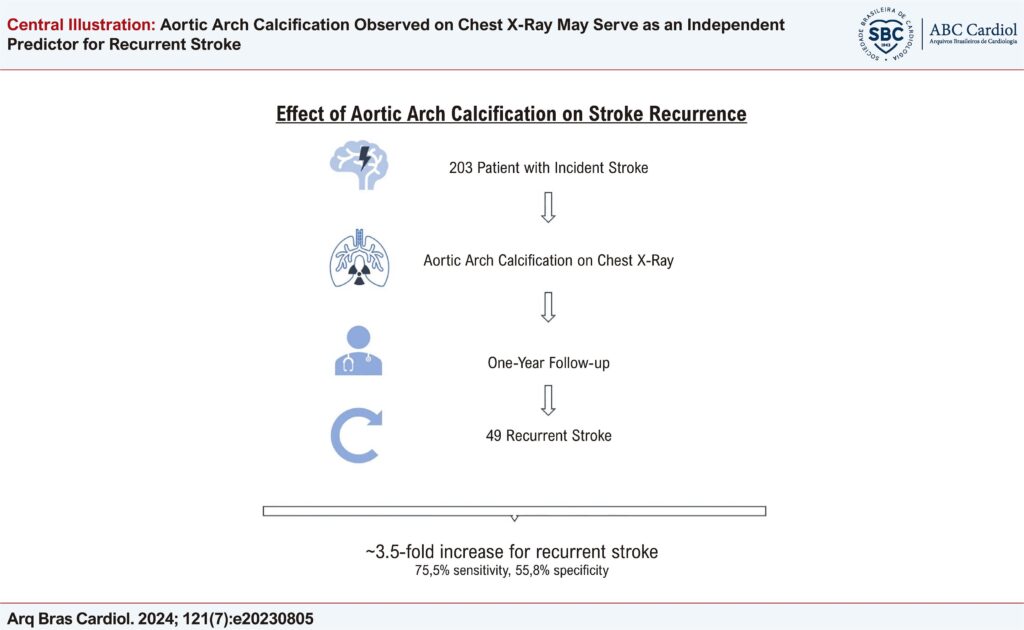Arq. Bras. Cardiol. 2024; 121(7): e20230805
Aortic Arch Calcification Observed on Chest X-Ray May Serve as an Independent Predictor for Recurrent Stroke
This Original Article is referred by the Short Editorial "A Fresh Glimpse on Chest X-Ray: Revealing Significance of Aortic Arch Calcifications for Stroke Recurrence".
Abstract
Background
Despite advances in diagnostic and treatment modalities, there is a need for predictive markers for recurrent strokes.
Objectives
This study aimed to investigate the relationship between aortic arch calcification (AAC) and stroke recurrence in stroke patients during a one-year follow-up.
Methods
All stroke patients who experienced their first event were evaluated for participation in the study. Patients who experienced recurrent strokes during the one-year follow-up were recorded. AAC was assessed by chest radiography. Based on the occurrence of recurrent strokes the patients were divided into two groups. AAC was classified into four categories according to its degree, and the presence of AAC was included in the statistical analysis. The relationship between AAC and recurrent stroke was assessed using a receiver operating characteristic curve. A significance level of <0.05 was deemed acceptable for all statistical analyses.
Results
A total of 203 patients were included in the study (46.8% female, mean age 69±12.3). Recurrent stroke was detected in 49 patients. AAC, hypertension, and atrial fibrillation were more frequent in patients with recurrent stroke. Patients with recurrent stroke had a lower glomerular filtration rate and a higher red cell distribution width (RDW). In multivariate regression analysis, AAC (hazard ratio [HR], 3.544; 95% CI:1.653-7.598, p=0.001) and RDW (HR,1.214; 95% CI:1.053-1.400, p=0.008) were identified as independent predictors of recurrent stroke.
Conclusion
The presence of AAC (≥ grade 1) and RDW were found to be significantly associated with the development of recurrent stroke within one year. These findings may have prognostic significance in the follow-up of stroke patients.
Keywords: Erythrocytes; Stroke; Thoracic Aorta
865

